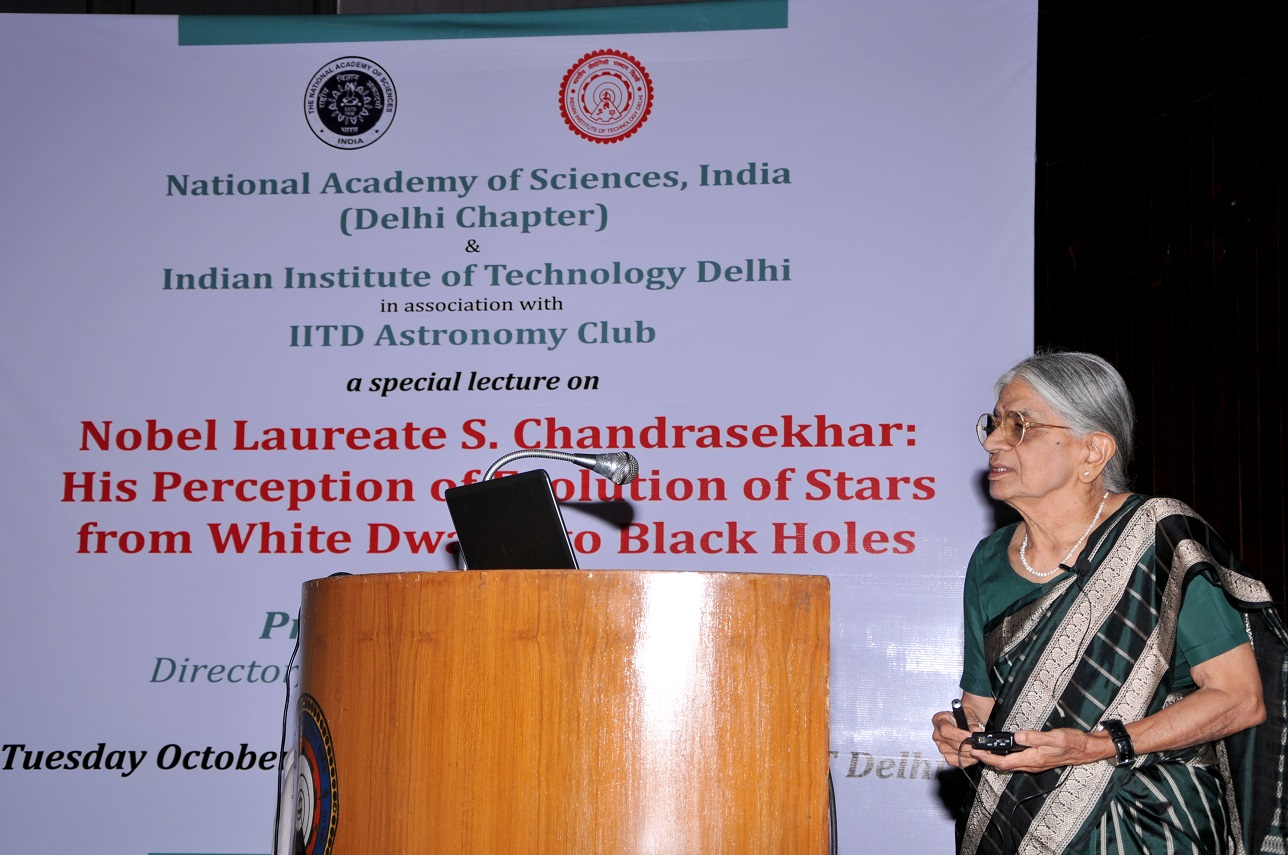Volume 12 Issue 3 March, 2022

Founder & president: Buti foundation http://www.butifoundation.org
Professor Buti was born in 1933; her family migrated from Lahore to Delhi during the partition of India. She was an arts student in High School as Government School, where she got admission on migration to Delhi, did not have science as an option. Her father, a Gold Medalist in mathematics from Panjab University, who later became a SC lawyer, perhaps seeded love for mathematics in her.
Later, Buti joined a one-year course at Delhi University to get admission into B.Sc. Physics (Hons.). She did her M.Sc. in physics also from Delhi University.
She is known for speaking her mind fearlessly, perhaps due to the values instilled in her during her childhood. Her father always stood by her side, encouraging her to pursue the field of her choice. She decided to pursue higher education in physics and went to the University of Chicago, where she had an opportunity to work with Nobel laureate Prof. S. Chandrasekhar. She worked on relativistic plasmas and earned her PhD in 1962. She decided not to marry and devote her life to physics. She returned to Delhi University as a teacher for two years and later went to the US to work at the Goddard Space Flight Center, NASA.



On her return from the US in early 1968, she joined the Department of Physics, Indian Institute of Technology (IIT), Delhi as a Senior Scientific Officer. Later, in 1969 she was invited to join Physical Research Laboratory (PRL) by Prof. Sarabhai, then director of PRL, where She worked for the next twenty-three years. She founded the Plasma Science Society of India in 1978 and was its President during 1992-93. She had also founded ‘Buti Foundation’ in 2003 to encourage young scientists, particularly women scientists (www.butifoundation.org/education.html)
Professor Bilma Buti is now an internationally renowned physicist, an inspiration to all Indian women and a face of women scientists of the country. She has exhibited deep commitment to the propagation of science to the society (www.butifoundation.org/css.html).
Some Awards and Recognitions:
- The First Indian woman physicist to receive Fellowship of Indian National Science Academy (INSA) 1981.
- The First Indian woman scientist to be elected as a Fellow of The World Academy of Sciences (TWAS) 1990.
- Fellow of National Academy of Sciences, India (NASI) 1992.
- Fellow of American Physical Society (APS) 1992.
- Director Plasma Physics, International Centre for Theoretical Physics (ICTP), Trieste, Italy (1985-2003).
- Vikram Sarabhai Award for Planetary Sciences, 1977
- INSA Jawaharlal Nehru Birth Centenary Lectureship award, 1993,
- INSA Vainu Bappu International Award in Astrophysics, 1994
- Lifetime Achievement Award of the University of Chicago in 1994.
- NASI Prof. MeghNad Saha Memorial Lecture Award, 2013.
- NASI A.C. Banerji Memorial Award 2017.
- Indian Physics Association R.D. Birla Award 2020.
What is Plasma ? (What medical students should know!)
As medical professionals, we are aware of blood plasma, but in physics, plasma is different; it is an ionized gas (gas split into its fundamental constituents due to thermal energy) sometimes referred to as the fourth state of matter other than solid, liquid, and gas. Plasma technology has numerous applications in medical sciences. For cancer the plasma technology is used in Targeted Drug Delivery system, through nanoparticles produced by plasma; targeting only the cancerous cells. Plasma technology is also used in dentistry. Cold plasma jet can destroy affected dental area, root canal infection and even helps in teeth whitening. The other applications of plasma technology are in faster wound healing, sterilization and management of hospital waste.


